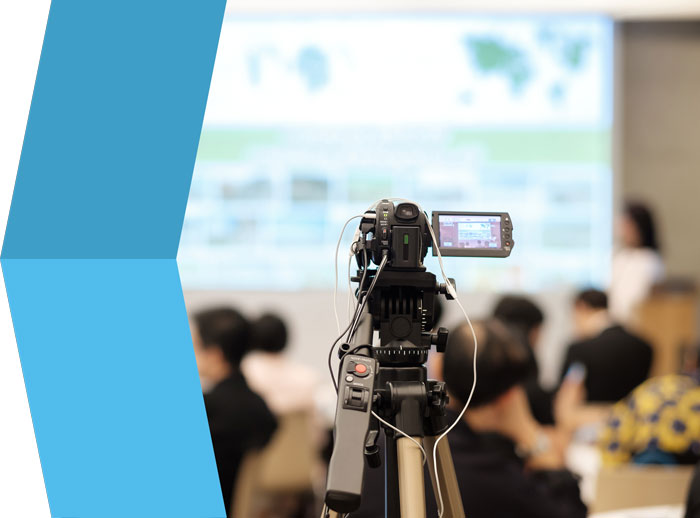Looking Into the Systems of Lawful Videography: Introduction Its Procedure in Shielding Authentic Visual Testament for Judicial Process
In the realm of judicial process, the function of legal videography stands as a foundation in maintaining and providing visual evidence. As technology continues to advance, the mechanisms behind lawful videography have become progressively detailed, supplying an essential layer of authenticity to testaments recorded on video clip.
Historical Advancement of Legal Videography
Examining the historic development of legal videography discloses a significant transformation in the recording and presentation of aesthetic evidence within the legal landscape. In the past, lawful procedures heavily relied upon composed photos and transcripts to record occasions and provide proof. However, with the introduction of video clip innovation, the lawful sector saw a paradigm shift in exactly how aesthetic testament was captured and offered.
The development of legal videography can be mapped back to the late 20th century when improvements in video clip recording devices made it much more accessible for use in court rooms. This technical development not just enhanced the accuracy and dependability of visual proof yet also transformed the means situations were presented to juries and judges (Legal Videography). Attorneys began to identify the influential power of video recordings in sharing feelings, nuances, and non-verbal signs that written pictures or transcripts alone could not catch effectively

Modern Technology Developments in Video Documents
What essential technical improvements have changed video documentation in the lawful area? The lawful area has seen significant developments in video clip documents technology that have improved the credibility and dependability of aesthetic proof in judicial procedures.
Furthermore, innovations in video clip encryption and watermarking technologies have boosted the safety and security and tamper-proof nature of video evidence, guarding it versus unapproved modifications or meddling. Furthermore, the development of cloud storage options and remote accessibility abilities has structured the storage, retrieval, and sharing of video proof, helping with seamless collaboration among lawful specialists and making certain reliable accessibility to essential visual testaments when required. These technological developments in video documents have actually definitely reinvented the legal field, enhancing the precision, reliability, and admissibility of aesthetic evidence in judicial procedures.
Function of Legal Videographers in Court Room Setups
The development of video documents modern technology in the legal field has demanded an essential duty for lawful videographers in court setups, guaranteeing the integrity and reliability of visual statements provided throughout judicial proceedings. Legal videographers play an essential duty in catching and protecting exact visual evidence that can be critical in court situations. Their duty reaches setting up equipment, videotaping procedures, and creating high-quality video clips that precisely reflect the events in the court.
Additionally, legal videographers typically function closely with legal groups to ensure that the video proof aligns with the case's requirements and can be properly presented in court to support the lawful disagreements being made. In general, the function of lawful videographers in court room setups is important in upholding the concepts of justice and making certain the transparency of lawful process. Legal Videography.

Ensuring Admissibility and Stability of Video Evidence
To preserve the credibility of aesthetic proof presented in lawful proceedings, making sure the admissibility and integrity of video evidence is a crucial duty for lawful videographers. Admissibility describes the approval of evidence by the court, and for video clip proof to be admissible, it has to fulfill specific criteria. Legal videographers play an essential role in making certain that the video clips they record abide with the guidelines of proof, such as relevance, reliability, and credibility.
Stability of video clip proof involves preserving the creativity and precision of the footage from the time it is taped till it exists in court. This consists of safely saving the video clip files, recording the chain of safekeeping, and preventing any type of meddling or changes. Lawful videographers need to follow strict procedures to assure the stability of the video clip evidence and prevent any type of challenges to its credibility.
Future Trends in Legal Videography
Offered the enhancing reliance on innovation in lawful procedures, legal videographers are positioned to welcome cutting-edge improvements shaping the future of aesthetic statement capture and discussion. One of the famous fads imminent is the combination of online fact (VIRTUAL REALITY) and increased fact (AR) innovations into legal videography. These modern technologies have the possible to change exactly Continued how aesthetic evidence exists in courtrooms, allowing courts and courts to immerse themselves in the scene of the criminal activity or event.
Moreover, using expert system (AI) algorithms for video clip evaluation is expected to streamline the procedure of examining and analyzing huge amounts of video footage. AI can assist in recognizing vital minutes, anomalies, and patterns within video clips, boosting the performance of legal investigations.

Final Thought
In conclusion, lawful videography has actually played a vital role in providing authentic visual proof for judicial procedures. Via technological advancements and the proficiency of lawful videographers, the honesty and admissibility of video clip proof are made certain in court settings. As lawful videography proceeds to develop, it will be important to support criteria that preserve the precision and reliability of visual testimony for the future of legal procedures.
Analyzing the historic development of legal videography exposes a significant makeover in the capturing and discussion of visual proof within the legal landscape.The evolution of video clip documentation technology in the lawful Full Article field has actually required a crucial duty for legal videographers in courtroom settings, making certain the stability and dependability of aesthetic testimonies offered throughout judicial process. Additionally, lawful videographers frequently function carefully with legal teams to guarantee that the video proof aligns with the case's demands and can be efficiently presented in court to sustain the legal disagreements being made.To preserve the credibility of aesthetic evidence offered in lawful process, making certain the admissibility and integrity of video proof is a crucial obligation for lawful videographers. As legal videography continues to advance, it will be vital to maintain criteria that preserve the precision and dependability of visual testament for the future of lawful proceedings.